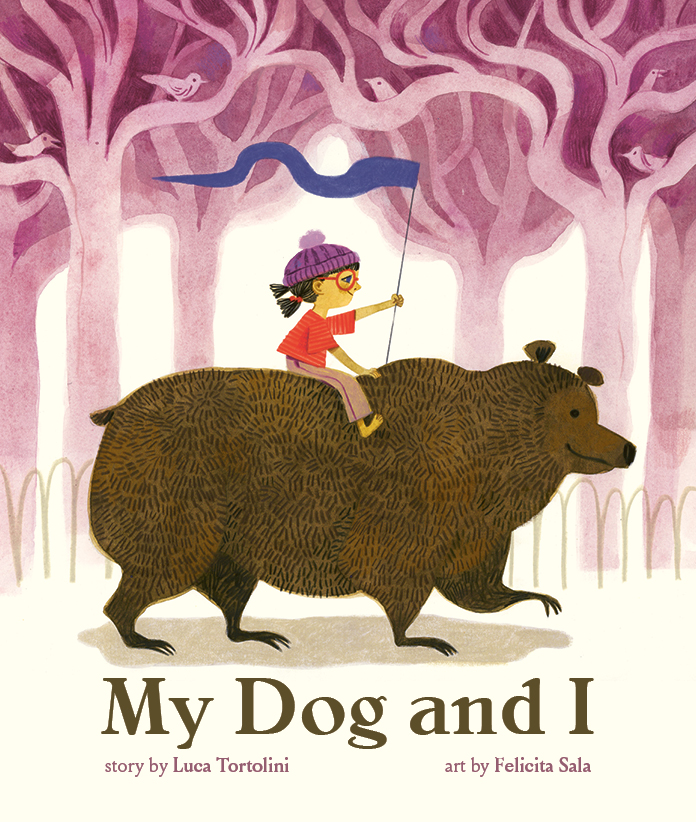My Dog and I

My Dog and I
My dog and I go for long walks,
all around town and further still.
But one day,
something happened.
My Dog and I is a truly fun read, but one that also includes some serious undertones. Like many children, the book’s little girl has always wanted a dog. One day, while walking in the park, she finds a dog, and, because it looks lost and lonely, she takes it home. Recognizing that her parents don’t like dogs, instead of her taking the dog into the house, she “built him a little house at the far end of the garden.” Over a period of days, she feeds her dog and plays with him before wondering if, perhaps, he’s actually a lost dog and his owner is looking for him. She puts up “Have you lost this dog” posters all over the neighborhood. When the posters do not elicit any responses, the girl happily concludes:
Well then, if nobody has lost a dog.
that means he’s nobody’s dog.
And if he’s nobody’s dog,
that means he can be my dog!
Becoming a dog owner brings some new positives to the girl’s life: the big kids no longer pull her hair, the kids at the back of the bus cease calling her names, the neighbor’s dogs stop chasing her and she, with the dog in bed with her, no longer requires a night light. However, the girl’s happiness is interrupted when the pair are on a walk and the dog chases something into some trees and does not reappear. Though the girl looks and looks, the dog does not return, and the tearful girl finally concludes that he is gone. She does find some emotional comfort from the contents of dream which allow her to conclude: “... somehow I knew my dog was going to be okay.” And the next day, when she’s again in the park, what does she find but – “A cat! He seemed lost and scared.”
What you, dear review reader, have read to this point is a summary of Luca Tortolini’s contribution to My Dog and I. Felicita Sala’s illustrations, however, add a significant humourous twist to the story because Sala’s art reveals that the girl’s dog is actually a bear, and the cat? A lion, of course. Tortolini could have ended the book with the discovery of the cat/tiger and a repetition of the pet adoption pattern, but he takes it one step further by having the dog/bear reenter the story, now accompanied by its mate and their cub. Sala’s closing illustration features an expanded dog/cat house in the garden.
The younger end of My Dog and I’s audience may just focus on the story’s obvious humour while school-aged readers may recognize the challenges the little girl was experiencing in her pre-dog/bear period of life.
Dave Jenkinson, CM’s editor, lives in Winnipeg, Manitoba,
